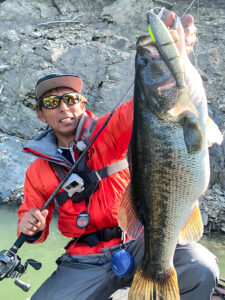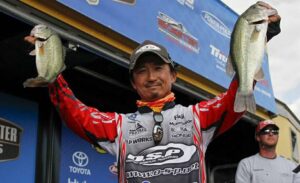Kazuma Izumi, the Legendary Pioneer in Japanese Bass Fishing
Have you heard of HMKL? Recently, DAIWA had launched their lure which has this name. For some of you this Daiwa product is the first one with this HMKL name. Actually, HMKL (to be pronounced “han-kle”) is the brand name which produces its own lures, and the name of the company which was established by Mr. Kazuma Izumi, in 1974. In 2024, it will celebrate the 50th anniversary of the birth of the brand, named after “Hand Made Kazuma’s Lures,” HMKL.
As you can guess, his lures have been iconic and milestones in the history of lure fishing in Japan. In this article, I will introduce the company HMKL, its founder, and some of the key products.
Mr. Kazuma Izumi, competition and lure building
Firstly, here is the brief life history of Mr. Izumi. All these years and competition results are shown in HMLK website.
In 1969, he started lure fishing and lure building at the same time. It was when he was 14 years old, living in Tokyo. In 1974, at the age of 19, he built an original minnow HMKL, founding his company of the same name as his lure.
In 1977, he traveled to Texas for bass fishing, for a month.
The big turning point in his career was in 1981, he took the lure building as his professional career.
In 1983, he took part in the Jerry Mackeness Tournament, held in Arkansas.
After he came back to Japan, in 1985, he joined JBTA (Japan Bass Fishing Association, which would become JB, Japan Bass-Pro Association, later.) and he started competing in Japan. He became the JBTA Angler of the Year, in 1986.
Having gained multiple wins in Japan, he turned his eyes to the U.S. again. In 1987, He joined the B.A.S.S. Invitational, to start competing there until 1991.
Returning to Japan, he resumed his competition activity in Japanese tournaments. At that time, he opened his own pro-shop HMKL, in Tokyo. Currently, he is still active in competition as well as his lure building.
As you can read above, his background is tournaments. Naturally, his lures are targeting to get more fish. And we can say that they are proven weapons for your competition.
Lures of HMKL
According to its website, the very original lure built in 1974, was inspired by Rapala lures. Based on the inspiration, the origin of the HMKL concept can be seen in the first prototype model. (Note; his shop in Tokyo is displaying these lures of its early stage.)
After the trial and errors in every detail of his lures, his lure building concept had reached to the three principles and his lures are carrying these in these features.
The 1st feature is the simple shape. The shapes of his lures are simple. He sees the shapes of all living creatures are made with reasons that they are shaved off the unnecessary parts to realize the beauty for the function. His lurs are reflecting this thought.
The 2nd feature is in the selections of colors and actions. These selections should be done, in order to trigger the biting action. One of the original concepts in his lure building from the beginning was to make the lure more realistic. In addition to this, this 2nd feature was applied. His lures are getting the touch of the color and realizing the action, questioning if the selection of colors and actions are stimulating target fish to bite.
Interestingly, among his own lures, he boasted that Night Rider colors and Ayaya colors are achieving it.
The 3rd characteristic of his lure is that they have less volume. This is coming from his fishing experience that the tougher the fishing condition becomes, the more likely that the smaller volume lure can gain better results.
After reaching these principles, his pursuit for the better lure is not ending. He is now trying to realize better usability features, namely the lure to catch more in tough situations with longer distance.
Jordan and Super Jordan
One of the iconic lures of HMKL is Jordan. This lure is developed to earn more bite to catch more. Though the original Jordan had only one hook, the following generation, Super Jordan, has two hooks. The hooks on its belly are fixed with an embedded swivel to avoid unhooking.
The way to use this minnow of his recommendation is as follows. Step 1; after cast, you leave the lure on the surface doing nothing for 30 seconds, then start slow straight-retrieve. Step 2; twitching it to let it walk-the-dog, then wait for 20 seconds doing nothing again.
It sounds so simple, but it is assumed that the rest of the work will be done by the lure itself.
K-1 Minnow
We can say that the origin of HMKL minnow lies in K-1 Minnow. The very original, which was made from balsa wood, was turned into a mass produced version with ABS plastic material. In doing so, it gained further casting distance with the addition of tungsten weight in some sizes. The parallel direction eye allows the easy darting actions. While using the same shape concept, each size has different tunes to achieve the best performance. For example, 65F was developed to catch bass with actions based on the floating action characteristic. It enables sharper and swifter actions than suspending type and it is easy to trace the water right below the surface.
The recommended usage is with the sharp retrieves, twitching and jerking. It can be used like a top water lure, to repeat twitch and pause or long stay after a cast.
If you want a lure that has very solid principles and reasons for its shape, then HMKL lures are definitely the choice.


One thought on “Kazuma Izumi, the Legendary Pioneer in Japanese Bass Fishing”